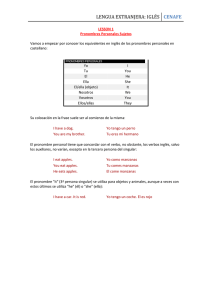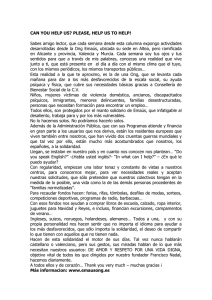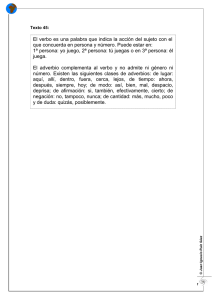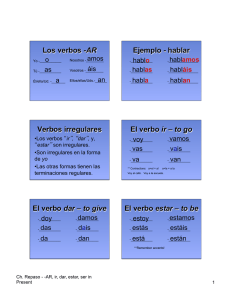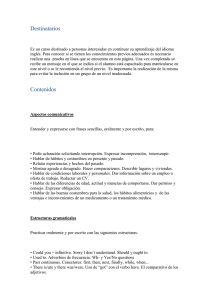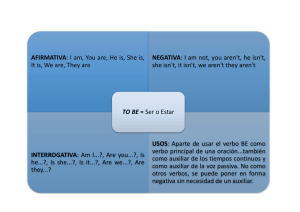estructura de la oracion
Anuncio
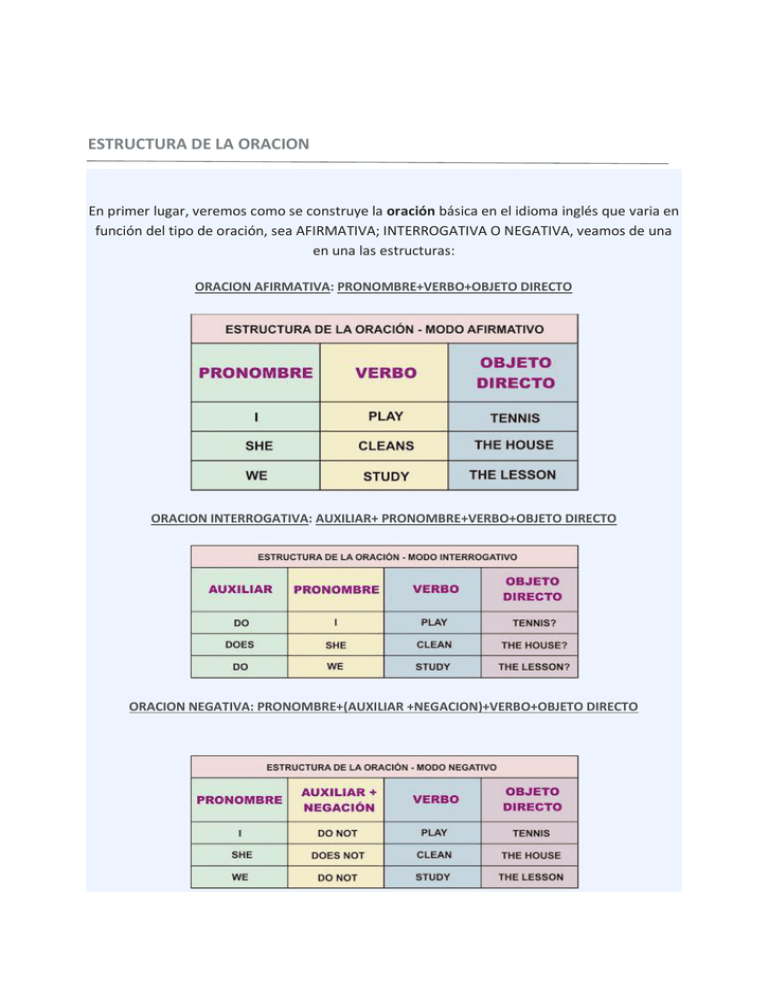
ESTRUCTURA DE LA ORACION En primer lugar, veremos como se construye la oración básica en el idioma inglés que varia en función del tipo de oración, sea AFIRMATIVA; INTERROGATIVA O NEGATIVA, veamos de una en una las estructuras: ORACION AFIRMATIVA: PRONOMBRE+VERBO+OBJETO DIRECTO ORACION INTERROGATIVA: AUXILIAR+ PRONOMBRE+VERBO+OBJETO DIRECTO ORACION NEGATIVA: PRONOMBRE+(AUXILIAR +NEGACION)+VERBO+OBJETO DIRECTO A estas oraciones, les podemos añadir complementos de tiempo, lugar, etc.. ESTOS COMPLEMENTOS SE UBICAN AL FINAL DE LA ORACIÓN. I study the lesson at night. (Yo estudio la lección por la noche.) She dances jazz at the nightclub. (Ella baila jazz en el club nocturne). They speak English fast. (Ellos hablan inglés rápido.) Generalmente el complemento de lugar se coloca delante del complemento de tiempo: I study the lesson in my house at night. (Yo estudio la lección en mi casa por la noche.) She dances jazz at the nighclub every night (Ella baila jazz en el club nocturno todas las noches.) They speak English at school during the class. ( Ellos hablan inglés en la escuela durante la clase.) LA ORACIÓN AFIRMATIVA EN INGLÉS SE CONSTRUYE DE ACUERDO CON LA SIGUIENTE ESTRUCTURA: Sujeto + Verbo + Objeto Directo I + eat + apples You + need + help We + bought + a car EN LA ORACIÓN NEGATIVA, EL AUXILIAR SE SITÚA DELANTE DEL VERBO PRINCIPAL: Sujeto + Auxiliar negación + Verbo + Objeto Directo I + don't + eat + apples You + don't + need + help We + didn't + buy + a car EN LA ORACIÓN INTERROGATIVA, EL AUXILIAR SE SITÚA AL COMIENZO DE LA MISMA: Auxiliar + Sujeto + Verbo + Objeto Directo ? Do + I + eat + apples ? Do + you + need + help ? Did + we + buy + a car ? OTROS COMPLEMENTOS DE LA ORACIÓN (LUGAR, TIEMPO, ETC.) SE SUELEN SITUAR AL FINAL DE LA MISMA: I eat apples at lunchtime. You need help in your job. We bought a car last Friday. NORMALMENTE, EL COMPLEMENTO DE LUGAR VA DELANTE DEL COMPLEMENTO DE TIEMPO: I eat apples at home at lunchtime. You need help in your job right now. We bought a car in Madrid last Friday. Cuando hay adverbios en las oraciones, éstos se suelen situar delante del verbo en las formas simples, y entre el auxiliar y el verbo principal en las formas compuestas (hay numerosas excepciones): I always eat apples at home. I have always eaten apples at home. You never need help. You have never needed help.

